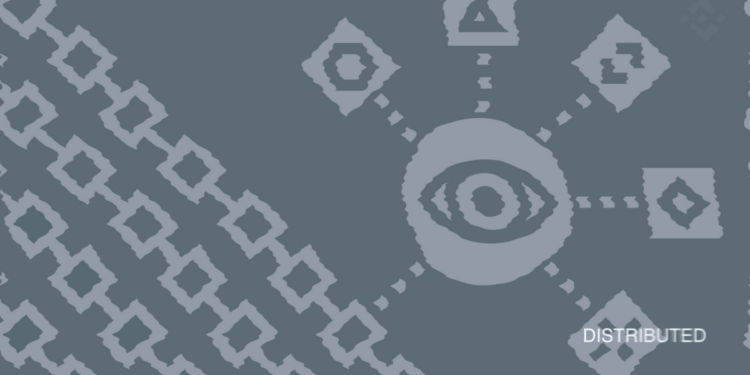Blockchain technology has brought a revolutionary change to many industries including, global financial markets, gaming sectors, and international trades. This modern innovation shows the potential of shifting trillion-dollar assets on-chain.
In this variable web, consumers can always maintain control of their assets and realize everything happening within an application is actually powered by smart contracts and blockchain technology working within oracles.
What Is An Oracle in Blockchain
Oracles establish a connection between the blockchain and external systems, enabling smart contracts to operate on the basis of real-world data.
Besides, oracles are critical to the development of the verified web because they enable interoperability between blockchains and connect previously isolated blockchains to off-chain data and computation.
The Chainlink oracle network first enabled the DeFi space, and it later grew to become the industry-standard oracle solution for all of Web3. Chainlink has permitted transactions totaling more than $9 trillion to date.
Why Blockchain Networks Need Oracle?
Oracles do not create real-world information; rather, it is gathered from pre-existing databases and reliably transmitted to the blockchain. Blockchains and oracles have a reciprocal connection. Oracles can deliver on-chain data to third-party programs, such as financial apps.
Smart Contracts’ Limitation
Smart contracts could only manage assets and data on their blockchain without the ability to interface with real-world events and information through oracles. This makes it possible for smart contracts to take action in response to a variety of data, including flight statuses, stock prices, and meteorological conditions.
Trustless Automation
Oracles allow smart contracts to execute automatically when certain real-world conditions are met. It functions as a conduit between external systems and blockchains, enabling the execution of smart contracts based on inputs and outputs from the real world.
Furthermore, oracles support smart contracts for trustless automation in a variety of ways, including regular data inputs, calculations, payments, and trustless transfers.
Real-World Applications:
- Decentralized Finance (DEFi) – pricing feeds for borrowing and landing.
- Insurance – tracking climate conditions to help payouts under crop insurance.
- Gaming – establishing a bridge between real-world events and in-game events.
See Related: SupraOracles Releases Roadmap to Mainnet While Starting 550+ Signed Web3 Project Integrations
Types of Oracles
- Software Oracles: Retrieves and transmits data from the web, APIs, and data feeds (e.g. weather data and stock prices).
- Hardware Oracles: Oracle hardware comprises a comprehensive array of scalable designed systems, servers, and storage that enable businesses to improve application and database performance, safeguard critical data, and save costs.
- Inbound Oracles: They collect data from an external source and deliver it to a smart contract like an oracle monitoring the Ethereum price and passing it to a defi smart contract.
- Outbound Oracles: Sending blockchain data to external systems. It’s like unlocking a smart lock after the confirmation of payments.
How Oracles Work in Blockchain Networks
Basic Mechanism:
Once a smart contract requests data, the oracle collects the requested data from a reliable source. The oracle sends the data back to the smart contract and executes depending on predefined logic.
Centralized Oracles vs. Decentralized Oracles:
Centralized oracles function as a single unit that gives a smart contract running with a set of security characteristics data from an external source. These oracles are the exclusive source of data for smart contracts and are governed by a single organization. It has a single point of failure, or bottleneck because it functions like the old financial system, in which one organization is in charge of everything.
These oracles have a straightforward architecture and require less upkeep and infrastructure expenditure. These are nevertheless vulnerable to corruption and attack, even though they offer defense against game theory attacks.
Because decentralized oracles don’t rely on just one source of truth, the data they supply to smart contracts is more legitimate. These kinds of oracles, in contrast to centralized ones, are dependent on several outside sources and strive for trustlessness. It makes use of the ShellingCoin technique, in which data is reported by independent sources independently of one another.
However, this technique is susceptible to a number of issues, including signaling, bribery, and cooperation between parties.
Challenges and Limitations of Oracles
● Data Reliability: Oracles rely on unreliable or altered external data sources.
● Security Risks: Data manipulation and Sybil attacks can target Oracle data, making it a weak point in a blockchain.
● Trust Issues: Users rely on the veracity and integrity of the data supplier in centralized oracles.
● Latency: The duration required for oracles to retrieve and send data may result in delays, making them unsuitable for certain use cases.
Solutions and Innovations
- Decentralized Oracles: To guarantee accuracy and dependability, employ a variety of data sources and consensus techniques. Chainlink and Band Protocol, for instance.
- Reputation Systems: Using reputation scores for oracles can encourage truthful actions and the sharing of data.
- Cross-Chain Oracles: Microorganisms that facilitate interoperability by allowing data transfer between several blockchain networks.
Conclusion
Oracles are crucial to extending the use cases of blockchain technology beyond on-chain operations. By bridging the gap between blockchain networks and the real world, they allow smart contracts to communicate with outside data sources. The need for safe, dependable, and decentralized Oracle solutions will only increase as blockchain technology develops.



